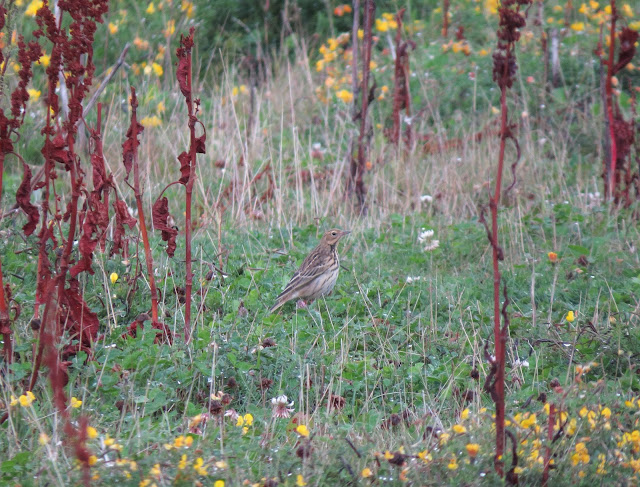2015 was the Big Bird Year for Grimsbury Reservoir promoted
by Banbury Ornithological Society. This was one of the main reasons I finally got
around to starting this blog. With increased promotion and more people visiting
the reservoir we managed to record an outstanding 126 species over the year at
Grimsbury Reservoir, the Woodland Nature Reserve and Upper Cherwell Valley
(U.C.V.). I set an unofficial target of 120 species at the start of the year
and when this was reached I raised the bar again and rather optimistically went
for 130. With a few more ‘easy’ species that were not recorded this year it may
have been possible. However, let’s not dwell on what wasn’t seen but marvel at
what was, including several species not recorded here ever before or not for
many years. Thank you to everyone who contributed with records and photographs.
Any records submitted to me directly also went to the B.O.S. but if you do have
any others outstanding, please do submit them to the B.O.S. as all records are
important.
 |
| Courtesy and copyright of Roger Wyatt |
The year started with some excitement, as on the last day of
2014, a probable Siberian Chiffchaff was found in the Grimsbsury Woodland NR. This,
along with the continued presence of the Willow Tit, attracted many observers
and although it is a hard subspecies to confirm with complete certainty many observers were
satisfied it was a Siberian Chiffchaff. The Willow Tit was present up to the
start of May and was observed singing on several occasions but then was not
seen through the summer. Breeding in the area was unconfirmed again and a
single bird reappeared in September, with two birds being seen sporadically
till the end of the year. Up to three Common Chiffchaffs were also present in
the early winter period and one in the late winter period.
 |
| Courtesy and copyright of Dave Fuller |
 |
| Courtesy and copyright of Derek Lane |
 |
| Shelduck and Brent Goose courtesy and copyright of John Friendship-Taylor Common Pochard courtesy and copyright of Derek Hales |
 |
| Little Ringed Plover, Oystercatcher and Black-tailed Godwit courtesy and copyright of JFT |
It was a great year for gulls and, although increased effort
definitely aided in more records, there were some really good sightings. The
only record of Great Black-backed Gull was of three flying over in January,
Kittiwake was recorded twice in March, a juvenile Little Gull in August, two
Mediterranean Gulls (Aug and Nov) and many Yellow-legged Gulls between August
and October (including up to 6 on a few occasions). We also had fun reading
colour-ringed Black-headed Gulls tracing some back to Lithuania, Denmark and
Germany.
 |
| Kittiwake courtesy and copyright of JFT |
An
Osprey seen migrating over in August was a case of perfect timing for two lucky
observers. A Nuthatch recorded in July was a generally common species that is very
rarely recorded here and a Ring-necked Parakeet was recorded infrequently from
July to October was the first for the site. A Little Tern made a very brief appearance in May and Black Terns were recorded twice
(one group of five). Other very notable sightings were Arctic Tern, Stonechat,
Water Rail, Hobby, and Little Egret. The autumn period was really productive
for Redstarts and Spotted Flycatchers and we even had another Black Redstart in
November. Siskins started migrating back through in July and after being almost
completely missing last winter were present through to the end of the year with
infrequent sightings of Lesser Redpoll.
Courtesy and copyright of Jason Coppock. Please view at 720p HD
In the U.C.V. there were some fantastic records. The most notable of these was a Wood Sandpiper at the new Borrow Pit pool in July. A Marsh Harrier was recorded going over on migration in July. Up to three Whinchats were present from July through to September. Two Tree Pipits stayed two days in August. Two Shelduck were record and were assumed to be the same ones as at the reservoir. Barn Owl was recorded a few times in the early winter period and Stonechats were present again in the late winter period. Some good numbers of Lapwing and Golden Plover were recorded (mostly flying over) in the late winter period too.
 |
| Courtesy and copyright of JFT |
Otters were seen by three different observers on three
different occasions. Although signs of them being present in the area are
common, to actually see them and to see them well enough to get photographs is
almost unbelievable.
 |
| First picture courtesy and copyright of Colin Wilkinson |
Another species that caused a stir was White-legged
Damselfly. I don’t think this species has been recorded here before and is
generally rare in Oxfordshire so several people were keen to come and see
them.
Thank you again to everyone for contributing with sightings
and photographs, it is very much appreciated.




No comments:
Post a Comment